Good Housekeeping Stran-Steel House (Ensign-Seelinger House)
Introduction
Text-to-speech Audio
Images
The Ensign-Seelinger House
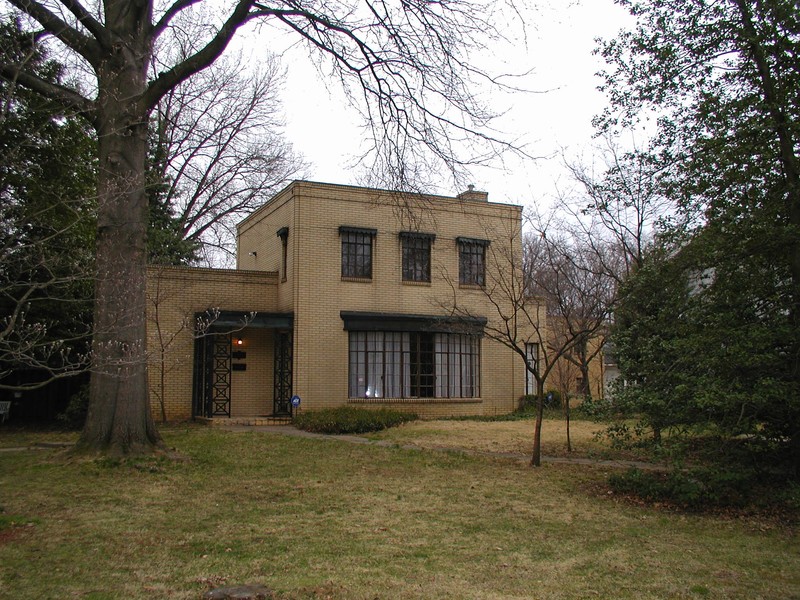
The Ensign-Seelinger House in Huntington, WV circa 2012
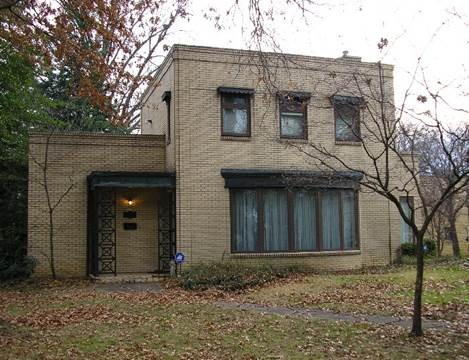
The Ensign-Seelinger House in Huntington, WV soon after it was constructed circa 1933-35
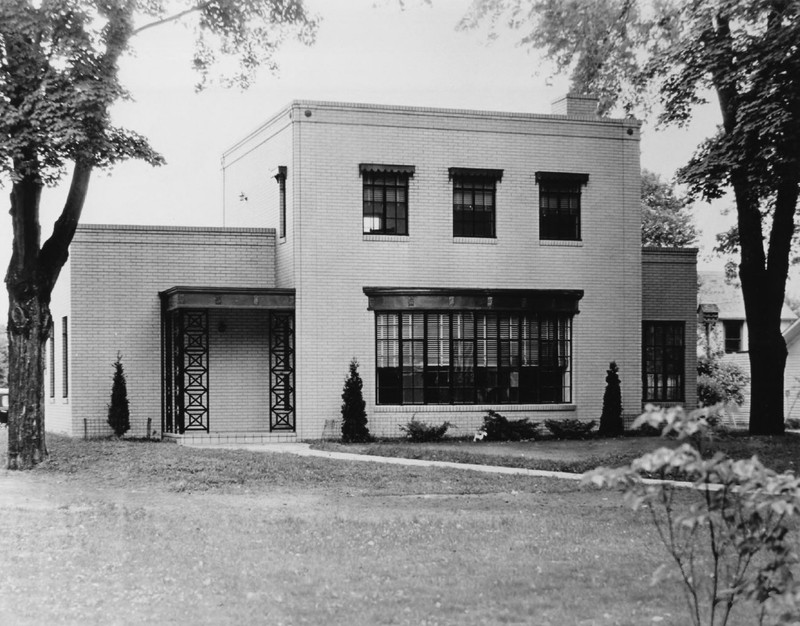
The Ensign-Seelinger House, circa 1980
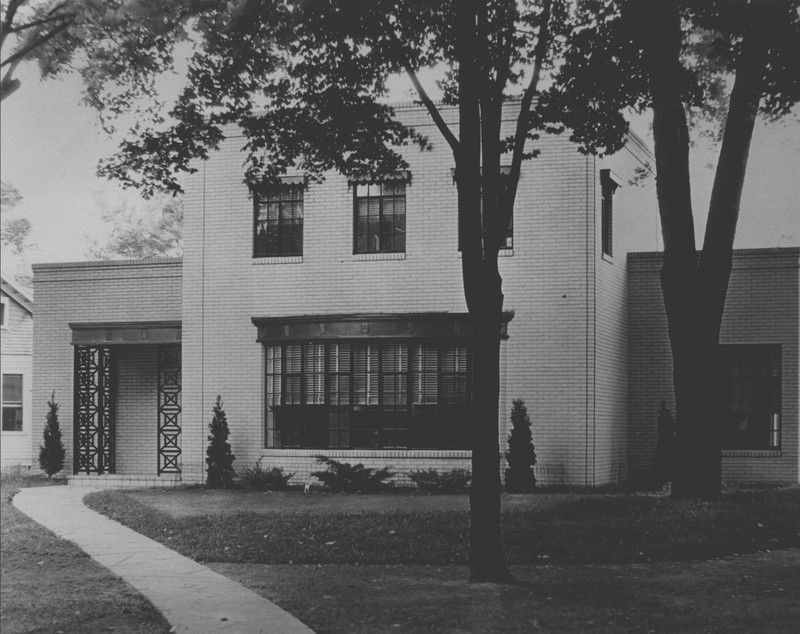
Original Chicago World's Fair demo home circa 1933
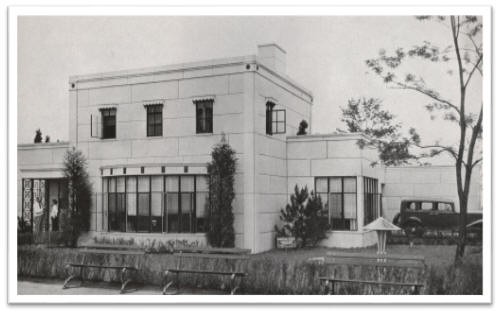
Construction of the demo home

Brochure from the 1933 Chicago World's Fair
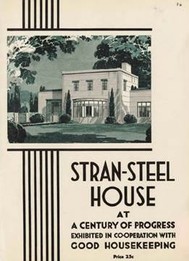
Original house flier given to visitors when touring the demo home
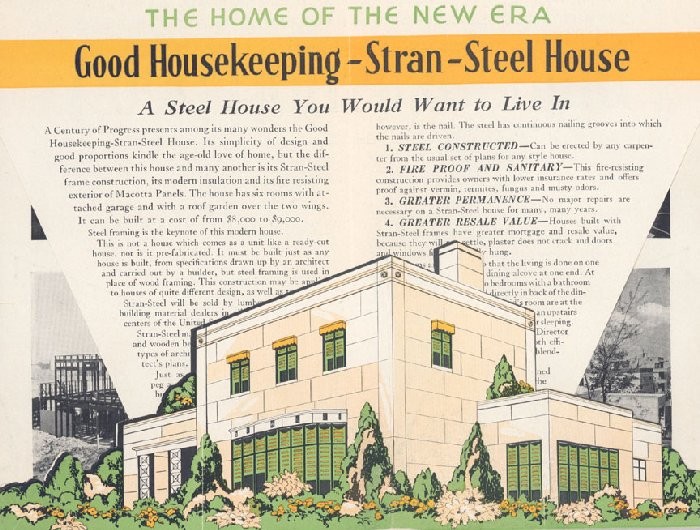
Floor-plan of the house from Good Housekeeping Magazine
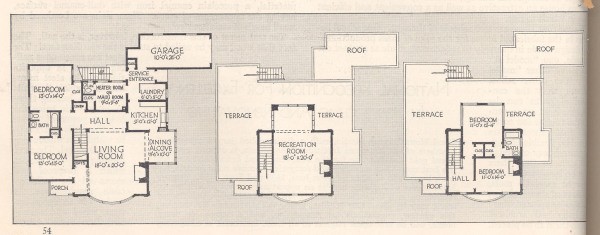
Living Room: sample of interiors sponsored by Good Housekeeping Magazine

Dining Room: Good Housekeeping Magazine interiors
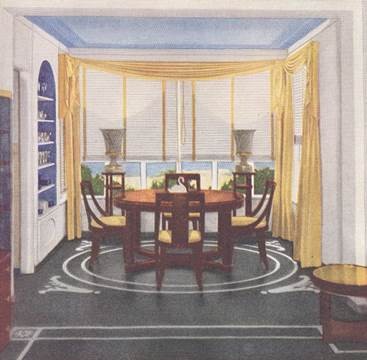
Second Floor Family Room: Good Housekeeping Magazine interiors
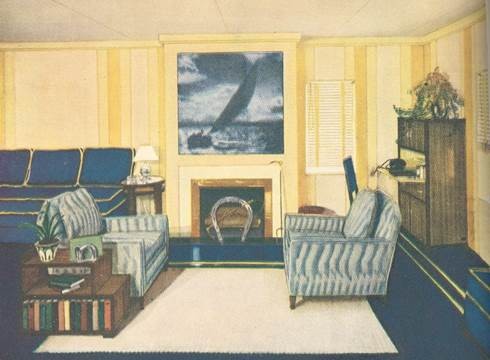
View of the demo home's second-floor terrace
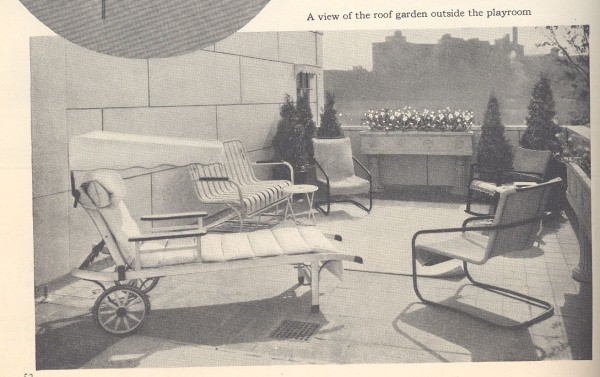
Backstory and Context
Text-to-speech Audio
The Chicago World’s Fair of 1933, called the Century of Progress in honor of the city’s centennial anniversary, was themed around the idea of technological innovation as progress. At the fair, an exhibit entitled “Homes of Tomorrow” showcased advances in modern building materials, architecture, and interior design with twelve model homes sponsored by corporations affiliated with home decor and construction. One of the featured demo homes was the Good Housekeeping Stran-Steel House designed by Detroit architects Henry Augustus O’Dell and Wirt C. Rowland. Good Housekeeping Magazine and the Stran-Steel Corporation commissioned the architects to create a home that would be aesthetically pleasing as well as fireproof, pre-fabricated, and affordable to the average family.
Constructed of concrete, steel and baked iron enamel, the Good Housekeeping Stran-Steel House was priced in the $7,500-$7,900 range, or less than $150,000 in today’s dollars. The home was unique in its use of steel, a building material that had formerly only been used for skyscrapers and commercial buildings. The Stran-Steel Corporation produced a lightweight steel beam that was more flexible and lighter than wood, and twice as strong. The frame of the home consisted of these beams in a network of interlocking joints. Additionally, specially-designed steel nails penetrated the girders to hold wallboard on both the inside and outside of the structure. The result was a sturdy and well-insulated building that could withstand severe weather and natural disasters.The house’s exterior covering was also innovative. To provide a fireproof surface, eight- by two- feet sheets of three-inch thick-baked iron enamel were used to cover the outside of the house. The baked surface of the material gave the illusion of brick and helped to insulate the home.
While not quite as eye-catching as George Keck's twelve-sided House of Tomorrow, another demo home in the “Homes of Tomorrow” exhibit, the design of the Good Housekeeping Stran-Steel House was also modern and innovative. The two-story home had six rooms and an attached garage, along with a terrace covering most of the second floor roof area. O’Dell and Rowland designed the home with entertainment in mind, as the upper level in the house’s middle section was dedicated to a large recreation room. The home’s design was typical of the modernist structures of the 1933 World’s Fair, whose planners wanted the fair’s architecture to reflect new, modern ideas and suggest future architectural developments. With its clean lines, rounded corners, and overall streamlined appearance, the Good Housekeeping Stran-Streel House was a prime example of the Art Deco influence on the artists and contractors of the day.
Good Housekeeping made use of its World’s Fair demo home in the 1933 editions of its magazine. In each volume, various rooms of the house were depicted to showcase numerous decorating suggestions, entertaining options, interior designs, and furnishings. The magazine offered interior design inspiration along with specific cutlery, napkins, and other accoutrements that consumers could purchase, all depicted within the futuristic Good Housekeeping Stran-Steel House. Several different companies provided interior fixtures for the exhibition home to help advertise their products, including the Inco Alloys International Inc. (now known as Huntington Alloys & Special Metals Co.) of Huntington, which provided the bathroom fixtures.
A West Virginia couple saw the demo home in Chicago while on their honeymoon and purchased its plans. The house was completed in 1935 for the family of Darwin Ensign, who went on to found Ensign Electric and Manufacturing Co. alongside Charles C. Armstrong in 1938. The Ensign family made a few modifications to the house, such as choosing yellow brick instead of baked enamel for the exterior. This change served a practical and aesthetic purpose, as it was discovered later that the baked enamel covering deteriorated over time. The layout of the Ensign home was also slightly modified to separate the garage from the main house, and a one-bedroom apartment was added above the two-car garage. While the main house has wood floors, the floor of the guest house is identical to the rubber flooring that was used in the demo home.
A number of other homes were built using the plans for the Good Housekeeping Stran-Steel House, including known examples in Philadelphia, Pennsylvania and Wichita Falls, Texas. The original demo home erected for the World’s Fair was purchased by real-estate developer Robert Bartlett in 1934 and transferred after the fair to Wilmette, Illinois, a suburb of Chicago. There, the home’s historic value was soon forgotten and the structure deteriorated. The Wilmette house was dismantled in 2018 despite the efforts that preservation groups made to save it. Today, Huntington’s Ensign-Seelinger House is distinctive as one of the few remaining Good Housekeeping Stran-Steel homes. The home was added to the National Register of Historic Places in 1980 as part of the 9th Street West Historic District.
Sources
Bergdoll, Barry . Christensen, Peter. Home Delivery: Fabricating the Modern Dwelling. New York, NY. The Museum of Modern Art, 2008.
Brooks, M. G. (2013). Good Housekeeping Stran-Steel House . In 1933-34 Chicago World's Fair: A Century of Progress Home Planning Group. Retrieved September 30, 2015, from http://users.marshall.edu/~brooks/Home-Planning-Group.htm
Brooks, M. G. (2013). In 1933-34 Chicago World's Fair: Good Housekeeping Stran-Steel House Interiors. Retrieved September 30, 2015, from http://members.tripod.com/rex_files/GHSS/
Foretek, Jared. The Forward-Looking Architecture Of The Century Of Progress Exposition, National Trust for Historic Preservation. May 12th 2017. Accessed March 26th 2020. https://savingplaces.org/stories/photo-essay-forward-looking-architecture-century-of-progress-exposition#.XnurrNNKg1I.
National Park Service Register of Historic Places, 1980 entry for the Ninth Street West Historic District. Retrieved November 23, 2015, from http://focus.nps.gov/nrhp/AssetDetail?assetID=d55a4ebb-528c-4199-b946-4f27e4e910a5
http://users.marshall.edu/~brooks/stran-steel.htm
http://users.marshall.edu/~brooks/stran-steel.htm
WV Dept. of Culture and History archives, 1980
http://www.wvculture.org/shpo/nr/pdf/cabell/80004016.pdf
http://members.tripod.com/rex_files/GHSS/index.album/1933-demo-home?i=1
http://members.tripod.com/rex_files/GHSS/index.album/construction?i=46&s=1
http://users.marshall.edu/~brooks/stran-steel.htm
http://members.tripod.com/rex_files/GHSS/index.album/original-brochure?i=0
http://members.tripod.com/rex_files/GHSS/index.album/floor-plans?i=37&s=1
http://members.tripod.com/rex_files/GHSS/index.album/living-room?i=2
http://members.tripod.com/rex_files/GHSS/index.album/dining-area?i=3
http://members.tripod.com/rex_files/GHSS/index.album/second-floor-play-room?i=5
http://members.tripod.com/rex_files/GHSS/index.album/terrace?i=29&s=1
